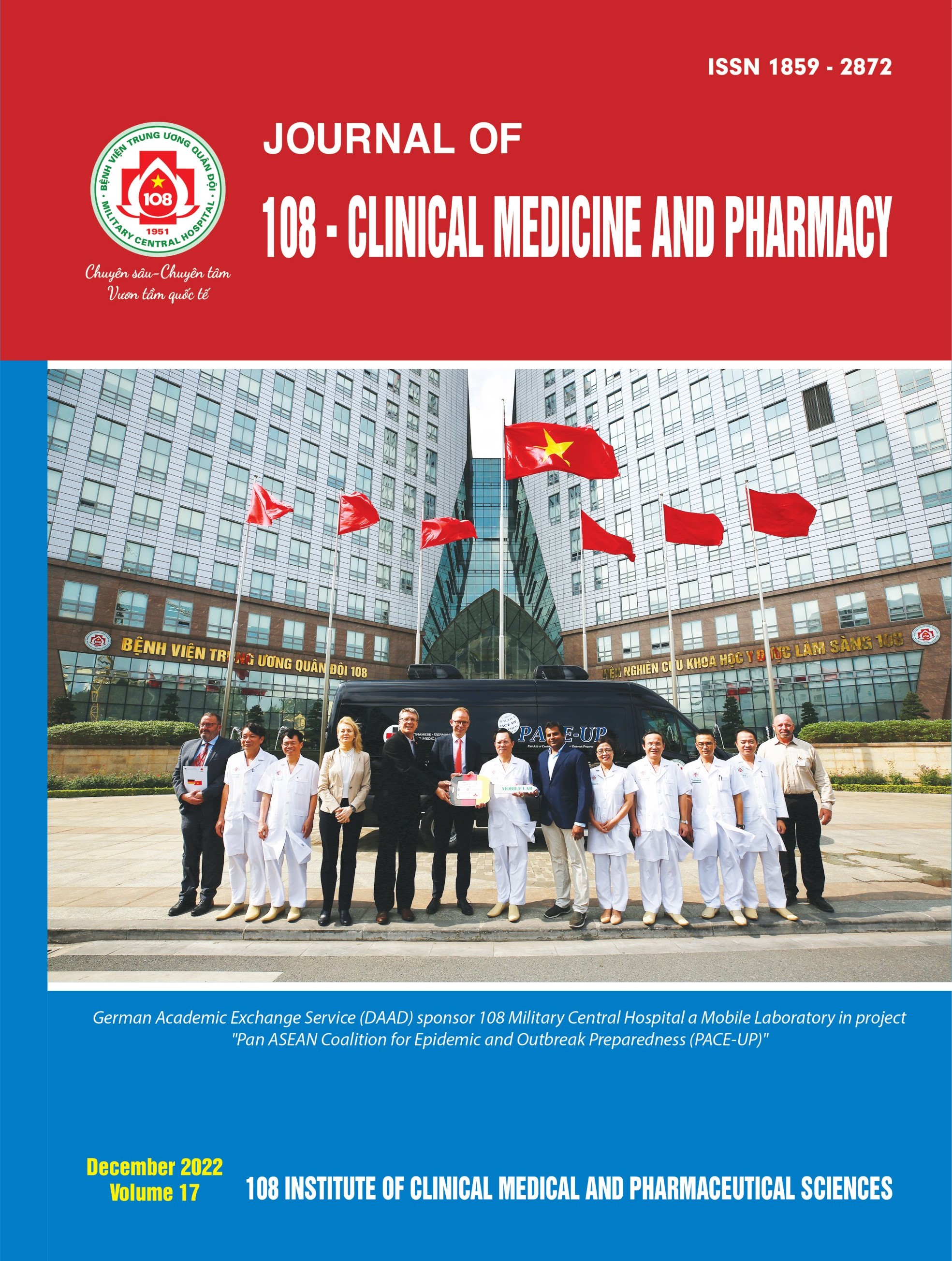Clinical characteristics and electrophysiological features in patients with persistent atrial fibrillation undergoing radiofrequency energy ablation
Main Article Content
Tóm tắt
Objective: To investigate the clinical and paraclinical characteristics and electrophysiological features after cardioversion in patients with persistent atrial fibrillation (AF). Subejct and method: This was a prospective study of 40 patients with persistent AF who underwent catheter ablation of AF using a three-dimensional (3D) system at the Vietnam Heart Institute, Bach Mai Hospital. Result: The mean age of the patients was 54.25 ± 12.54 years, and 80% of patients were male, the symptoms (according to EHRA) of patients ranged from grade IIb (67.5%) to grade III (32.5%). Hypertension (42.5%) and alcohol abuse (37.5%) were the most common risk factors. After cardioversion, patients with persistent AF exhibited longer sinus node recovery time (SNRT) (1445.11 ± 547.33ms) and corrected SNRT (667.03 ± 517.21ms) than healthy controls. Conclusion: Persistent AF is common in the elderly, especially men, with prevalent risk factors, such as hypertension and alcohol abuse. After cardioversion, patients with persistent AF have an SNRT longer than normal.
Article Details
Các tài liệu tham khảo
2. Pham Tran L, Quoc Khanh P, Viet NL (2015) Clinical and electrophysiological characteristics of patients with paroxysmal atrial fibrillation. Viet Med J 430(1): 159-165.
3. Tsang TSM, Barnes ME, Miyasaka Y et al (2008) Obesity as a risk factor for the progression of paroxysmal to permanent atrial fibrillation: A longitudinal cohort study of 21 years. Eur Heart J 29(18): 2227-2233.
4. Sandhu RK, Conen D, Tedrow UB et al (2014) Predisposing factors associated with development of persistent compared with paroxysmal atrial fibrillation. J Am Heart Assoc 3(3): 000916.
5. McManus DD (2015) Atrial fibrillation and hypertension: mechanistic, epidemiologic, and treatment parallels. Methodist Debakey CardioVasc J 11(4): 228-234.
6. Voskoboinik A, Kalman JM, De Silva A et al (2020) Alcohol abstinence in drinkers with atrial fibrillation. N Engl J Med 382(1): 20-28.
7. Scharf C, Sneider M, Case I et al (2003) Anatomy of the pulmonary veins in patients with atrial fibrillation and effects of segmental ostial ablation analyzed by computed tomography. J Cardiovasc Electrophysiol 14(2): 150-155.
8. Prasanna LC, Praveena R, D’Souza AS, Bhat KM (2014) Variations in the pulmonary venous ostium in the left atrium and its clinical importance. J Clin Diagn Res 8(2): 10-11.
9. Shah DC, Haïssaguerre M, Jaïs P et al (2000) Electrophysiologically guided ablation of the pulmonary veins for the curative treatment of atrial fibrillation. Ann Med 32(6): 408-416.
10. Ho SY, Cabrera JA, Tran VH et al (2001) Architecture of the pulmonary veins: relevance to radiofrequency ablation. Heart 86(3): 265-270.
11. Jaïs P, Haïssaguerre M, Shah DC et al (1997) A focal source of atrial fibrillation treated by discrete radiofrequency ablation. Circulation 95(3): 572-576.
 ISSN: 1859 - 2872
ISSN: 1859 - 2872
